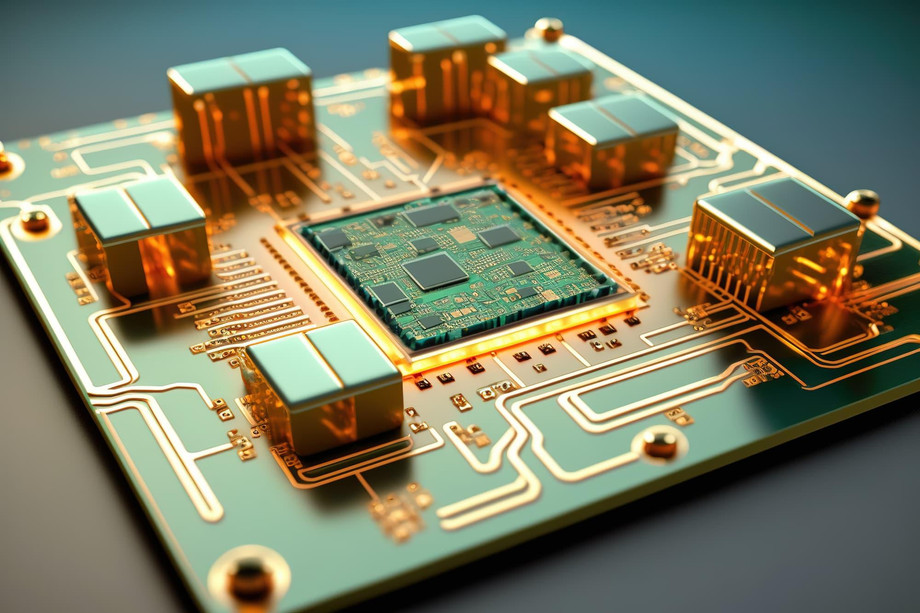As the urgency for sustainable energy solutions grows, innovative embedded hardware technologies are emerging as critical players in enhancing energy management systems. These advancements are not only transforming how we consume energy but also paving the way for a greener future. By integrating smart technologies into energy management, businesses and individuals can monitor and optimize their energy usage, thereby reducing costs and environmental impact.
Understanding Embedded Hardware in Energy Management
Embedded hardware refers to specialized computing systems designed to perform dedicated functions within larger systems. In the context of energy management, embedded hardware plays a vital role in collecting data, analyzing energy consumption patterns, and executing control strategies. This hardware can include microcontrollers, sensors, and communication devices that work together seamlessly to optimize energy usage.
Key Benefits of Embedded Hardware in Energy Management
- Real-Time Monitoring and Control
One of the standout features of embedded hardware solutions is their ability to monitor energy consumption in real-time. This capability allows businesses and consumers to identify energy-hungry devices, track usage patterns, and make informed decisions. For example, smart meters equipped with embedded systems can provide detailed insights into energy consumption, helping users understand their energy habits better.
- Enhanced Efficiency Through Automation
Automation is a significant advantage of using embedded hardware in energy management systems. By automating processes, such as turning off lights when rooms are unoccupied or adjusting thermostats based on occupancy, embedded systems can significantly reduce energy waste. These automated systems not only lower energy bills but also contribute to a sustainable environment by minimizing unnecessary energy use.
- Data-Driven Insights
Data collection is crucial for effective energy management. Embedded hardware systems can gather vast amounts of data on energy consumption, allowing users to analyze trends and make data-driven decisions. By leveraging analytics and reporting tools, organizations can identify inefficiencies, forecast energy needs, and implement strategies that align with sustainability goals.
- Integration with Renewable Energy Sources
The integration of renewable energy sources into the grid presents unique challenges and opportunities. Embedded hardware solutions facilitate the efficient management of these sources, such as solar panels and wind turbines. By utilizing smart inverters and energy storage systems, users can optimize energy production and consumption, maximizing the benefits of renewable energy and reducing reliance on fossil fuels.
Applications of Innovative Embedded Solutions
Innovative embedded hardware solutions are making waves across various sectors in sustainable energy management. Here are a few notable applications:
- Smart Grids
Smart grids utilize embedded hardware to enhance the efficiency and reliability of electricity distribution. Through real-time data collection and communication between devices, smart grids can manage energy supply and demand effectively. This technology allows for better integration of renewable energy sources, reducing the risk of outages and ensuring a steady energy supply.
- Home Energy Management Systems (HEMS)
Home energy management systems leverage embedded hardware to empower homeowners to monitor and control their energy use. These systems enable users to schedule energy-intensive tasks during off-peak hours, adjust thermostats remotely, and receive notifications about energy consumption. By giving homeowners greater control over their energy usage, HEMS can significantly lower utility bills and carbon footprints.
- Industrial Energy Management
In industrial settings, embedded hardware solutions are crucial for optimizing energy usage and reducing operational costs. Advanced monitoring systems can identify energy waste in production processes, allowing manufacturers to implement corrective actions swiftly. Furthermore, predictive maintenance powered by embedded systems can enhance the efficiency of equipment, reducing downtime and energy consumption.
- Electric Vehicle (EV) Charging Infrastructure
The rise of electric vehicles has created a need for efficient charging infrastructure. Embedded hardware plays a key role in managing EV charging stations, ensuring optimal energy distribution based on demand. Smart charging solutions can adjust charging rates based on grid conditions, incentivizing users to charge during off-peak hours. This capability not only benefits the environment by balancing energy loads but also reduces charging costs for EV owners.
Challenges and Future Directions
While the benefits of embedded hardware solutions in energy management are clear, several challenges remain. For instance, the integration of various technologies can lead to interoperability issues. To address this, industry standards and protocols must be established to ensure compatibility among different devices and systems.
Additionally, cybersecurity is a critical concern as energy management systems become more interconnected. Protecting sensitive data and ensuring system integrity will be vital for building trust among users and stakeholders.
Looking ahead, the future of embedded hardware solutions in sustainable energy management is promising. Advances in artificial intelligence and machine learning will enable even more sophisticated energy management systems that can predict energy needs and optimize consumption in real time. Furthermore, the growing emphasis on sustainability will drive innovation in embedded hardware design, leading to more energy-efficient and environmentally friendly solutions.
Conclusion
Innovative embedded hardware solutions are revolutionizing sustainable energy management by enabling real-time monitoring, enhancing efficiency through automation, and providing valuable data-driven insights. As we embrace these technologies, we are not only improving our energy consumption practices but also contributing to a more sustainable future. By harnessing the potential of embedded systems, individuals and organizations can play a crucial role in the global transition towards renewable energy and environmental responsibility.
To Know More About embedded hardware solutions

